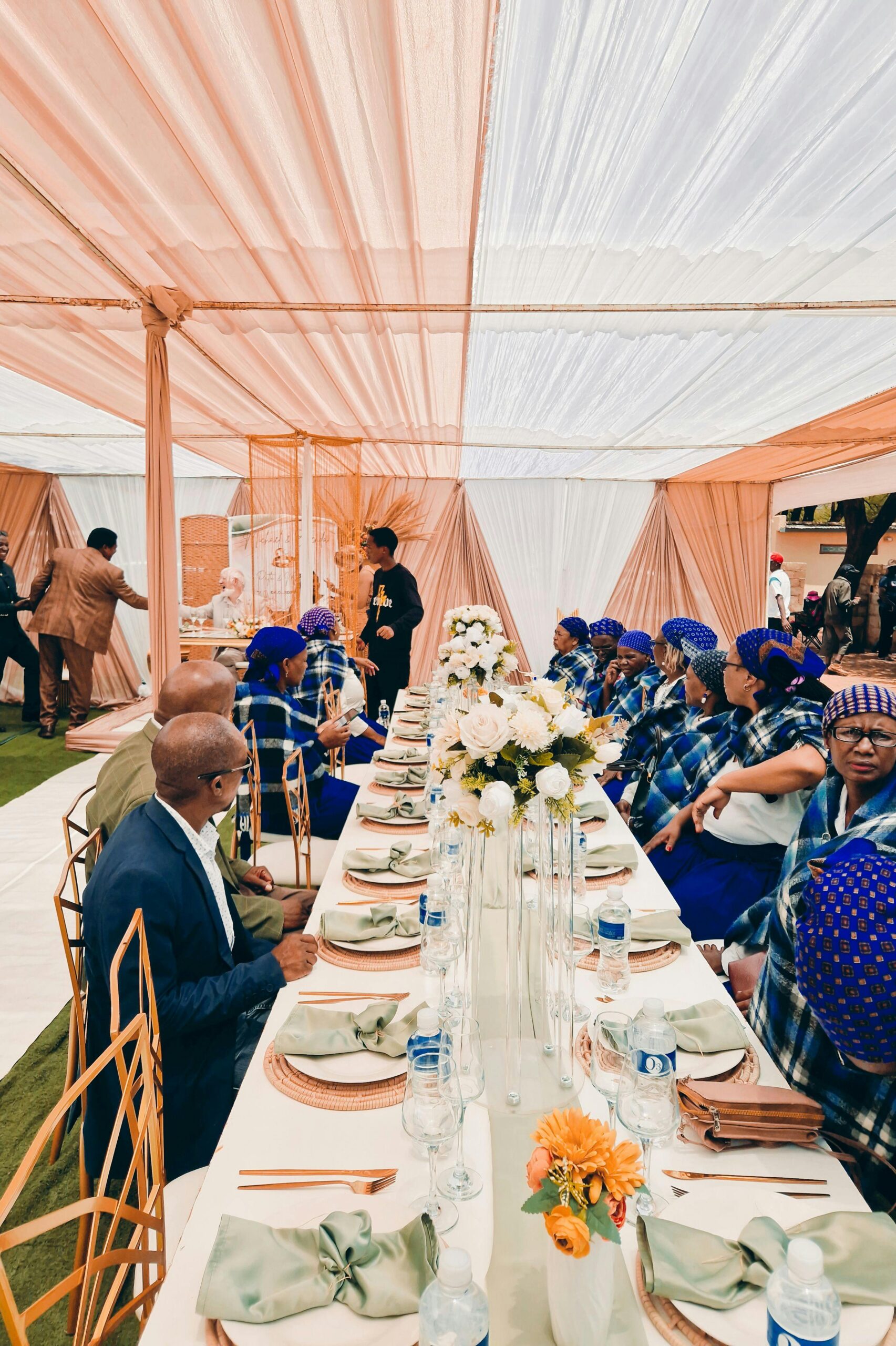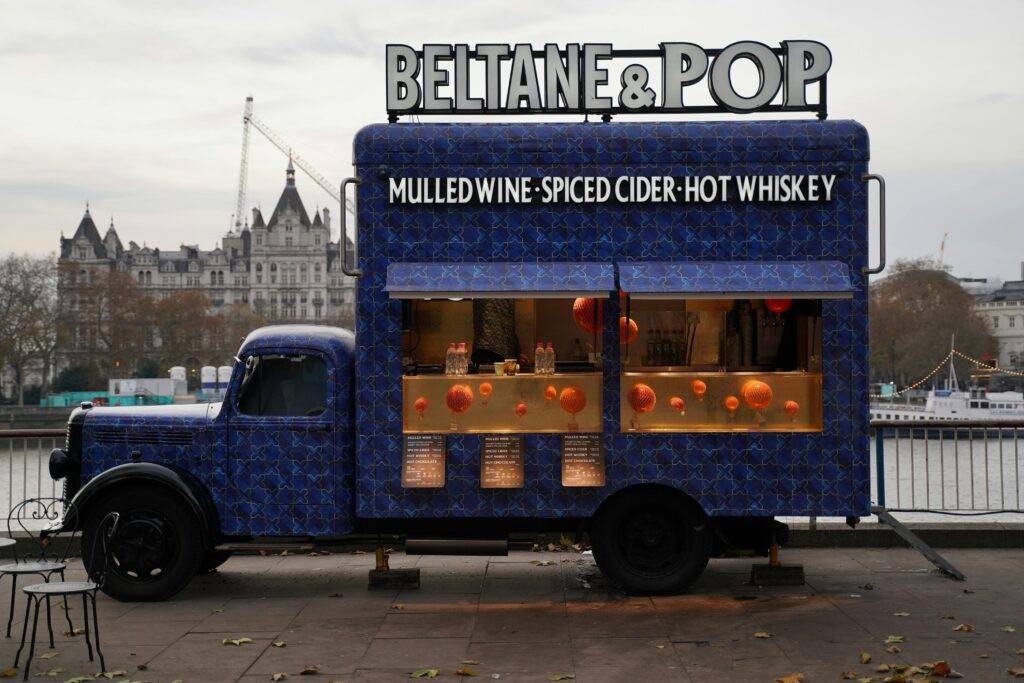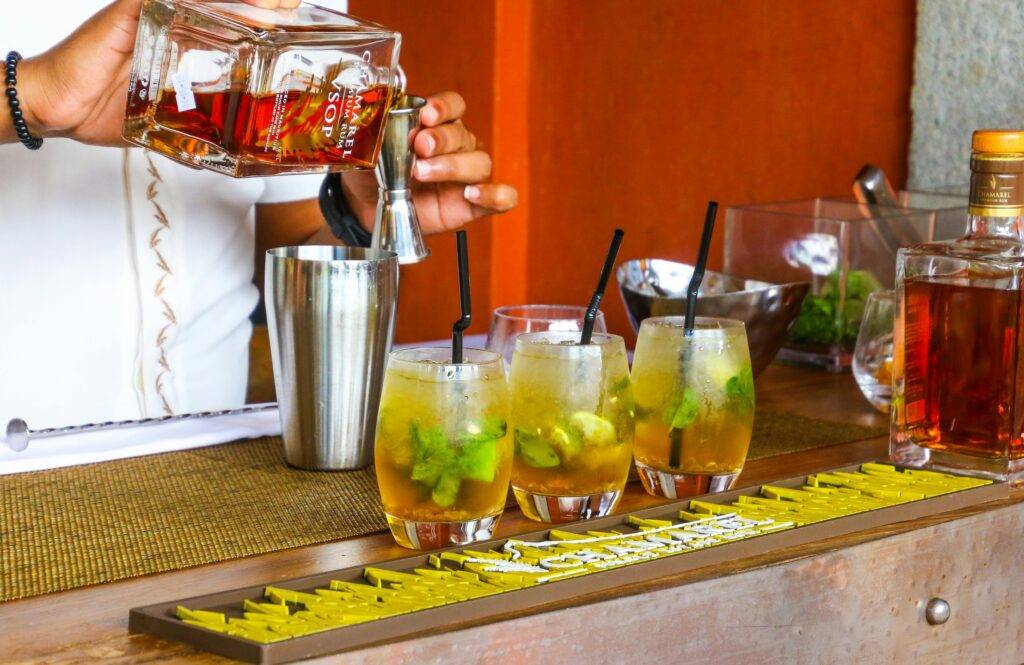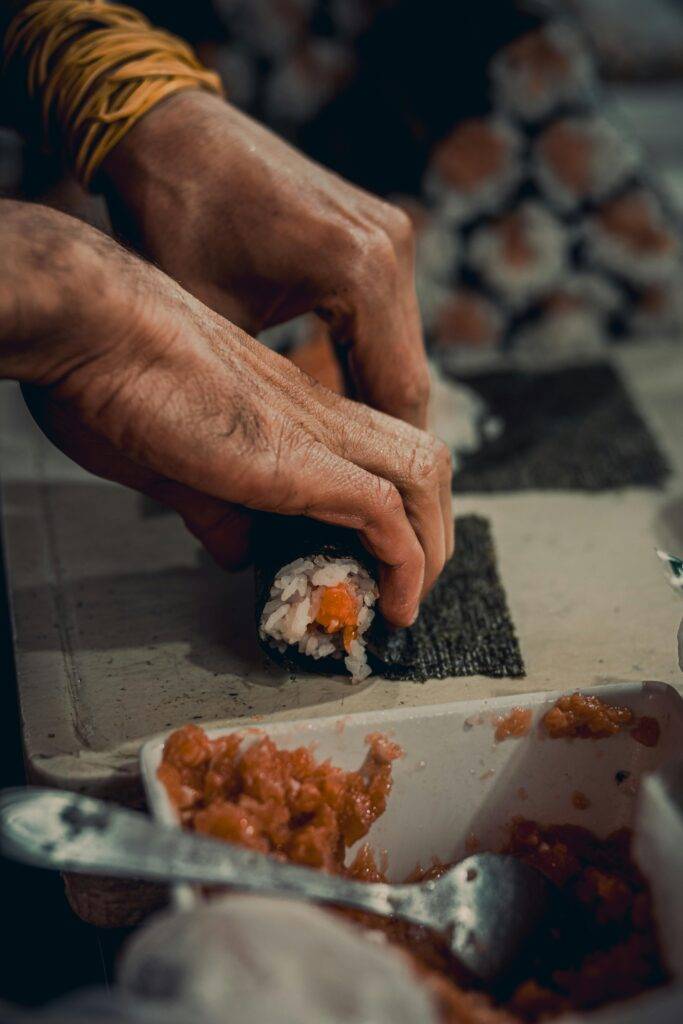Top 10 Wedding Catering Trends For 2025

Weddings are a celebration of love, unity, and the start of a shared journey. They are also a reflection of the couple’s unique tastes and preferences. One area where this personal touch is most evident is in the catering choices, especially with the rise of new wedding catering trends.
As we look ahead to 2025, the wedding catering landscape is set to evolve in exciting ways. This article will explore the top 10 wedding catering trends that are expected to dominate the scene.
From the rise of food trucks and mobile catering to the embrace of sustainable practices, the future of wedding catering is innovative and diverse. Personalized menus that tell a story, interactive food stations, and plant-based options are just a few trends to watch out for.
Technology is also making its mark, enhancing the dining experience in unexpected ways. Meanwhile, the focus on inclusivity is leading to menus that cater to diverse dietary needs.
Fusion cuisine and experiential dining are adding a dash of adventure to wedding feasts. And let’s not forget the power of Instagrammable presentations and zero-waste initiatives in shaping the catering choices.
So, whether you’re a marketing manager seeking fresh content ideas or a wedding planner looking for the next big thing in catering, this article is for you. Let’s dive in and explore the future of wedding catering.
1. The Rise of Food Trucks and Mobile Catering
In recent years, food trucks have cruised their way into the wedding scene, offering a breath of fresh air to traditional catering methods. The appeal lies in their flexibility and ability to bring a unique flair to wedding celebrations. As we approach 2025, this trend is poised to expand further, captivating couples and guests alike.
These culinary trucks offer a mobile catering experience that can adapt to various wedding styles, from rustic outdoor ceremonies to chic urban nuptials. Their charm lies in their ability to park almost anywhere, providing delicious fare in non-traditional venues. This flexibility allows for unique locations and settings, making every wedding distinctive.
Food trucks also provide diverse menu options, ranging from gourmet sliders to delectable sushi rolls. This versatility allows couples to infuse their personal tastes and even their cultural heritage into the event’s culinary offerings. Guests can savor multiple cuisines in one venue, adding layers of enjoyment and surprise.
Consider these top reasons to incorporate food trucks and mobile catering into your wedding:
- Variety and Customization: Offers wide-ranging menu selections.
- Interactive Experience: Guests can watch meals being prepared.
- Cost-Effective: Potentially lowers the cost compared to traditional catering.
In addition, food trucks often provide lively, interactive experiences. Guests can witness chefs at work and enjoy the spectacle of meals being crafted on-site. This engaging dynamic turns dining into entertainment, ensuring the event is both memorable and Instagram-worthy.
Ultimately, the rise of food trucks and mobile catering symbolizes a shift towards more personalized, dynamic wedding experiences. They offer a fresh perspective on what wedding catering can be, setting a trend that is sure to continue flourishing well into 2025.

2. Sustainable and Eco-Friendly Catering Practices
As we progress into 2025, sustainability in wedding catering is more than a buzzword. It’s a necessity that couples consider when planning their special day. Eco-friendly practices are becoming mainstream, with an emphasis on minimizing environmental impact.
Caterers now offer organic, farm-to-table menus that highlight local produce. Sourcing ingredients locally reduces food miles and supports regional farmers. This practice also guarantees freshness and quality, elevating the dining experience. It’s a trend that demonstrates how delicious green initiatives can be.
Furthermore, many couples choose to implement waste reduction strategies. This includes composting food scraps and eliminating single-use plastics, opting for biodegradable alternatives instead. These steps not only reduce waste but also exemplify responsibility and thoughtfulness in event planning.
Adopting sustainable practices in catering includes:
- Local and Seasonal Ingredients: Reduce carbon footprint and enhance freshness.
- Compostable Utensils and Plates: Replace single-use plastics.
- Leftover Donation Programs: Share surplus food with local shelters.
Additionally, zero-waste is becoming an essential part of wedding catering. Couples are pushing for venues and vendors that prioritize minimizing trash. These efforts reflect a shift in mindset towards eco-conscious celebrations without sacrificing elegance or style.
In summary, sustainability in wedding catering is a forward-thinking approach that resonates with environmentally-aware couples. It promotes a harmonious balance between celebrating love and honoring the planet. This is a trend set to grow as more couples seek to make a positive impact while creating unforgettable moments.
3. Personalized Menus That Tell a Story
In 2025, personalization has a new protagonist: the wedding menu. Couples are choosing menus that reflect their unique journey and love story. This thoughtful trend goes beyond simple preferences, creating an immersive culinary narrative.
Each dish can echo significant moments or shared experiences. For example, a destination engagement could inspire a Mediterranean appetizer. This adds a layer of intimacy and charm, transforming the meal into a storytelling experience.
Caterers work closely with couples to curate these signature menus. Collaborations often involve blending cultural backgrounds and childhood favorites. This approach provides a meaningful connection between the couple’s history and their future together.
Elements that contribute to personalized menus include:
- Cultural Infusions: Highlight heritage through traditional dishes.
- Memory-Making Dishes: Feature foods tied to special memories.
- Signature Cocktails: Create drinks inspired by pivotal moments.
Moreover, personalized menus can incorporate local flavors that resonate with the venue or season. This not only enhances the narrative but also showcases regional treasures. It offers guests a taste of place, stitching each course into the fabric of the celebration.
The trend of personalized menus isn’t just about the palate; it’s about passion. It turns meals into memoirs, inviting guests to savor more than just food. Through these curated experiences, love’s story is shared with all gathered to witness it.
4. Interactive Food Stations and DIY Bars
Interactive food stations are making waves in 2025’s wedding scene. These vibrant setups transform dining into an engaging experience. Guests become active participants, customizing their plates to taste.
DIY bars take center stage, offering a fun twist to traditional dining. Picture a taco station with endless toppings or a cocktail bar with mix-and-match ingredients. This flexible approach caters to diverse palates, inviting creativity.
One of the key charms of these setups is their social aspect. Guests gather around, exchanging tips and flavors. It naturally fosters conversation, adding an effortless layer of interaction to any reception.
Popular options include:
- Taco Bars: Guests assemble their perfect taco with various toppings.
- Pasta Stations: Mix-and-match pastas, sauces, and add-ins.
- Bespoke Cocktail Bars: Craft personalized drinks with fresh garnishes.
Moreover, interactive stations are a feast for the senses. Visually appealing setups draw guests in, while fresh aromas tantalize. They elevate the dining experience beyond taste alone, making it memorable.
Interactive food stations and DIY bars bring a lively dynamic to wedding dining. They cater to individuality while enhancing social connections. This trend’s charm lies in its ability to make each guest feel involved and empowered in their culinary choices.

5. Plant-Based and Vegetarian Menus on the Rise
In 2025, plant-based and vegetarian menus are more than a trend; they’re a culinary revolution. Couples today want sustainable, health-conscious options that delight without compromise. These menus are also rich in flavor, creativity, and visual appeal.
The shift towards plant-based dining celebrates freshness and innovation. Chefs craft dishes that feature vibrant vegetables, legumes, and grains, creating robust flavors. Not only do these options support sustainable practices, but they also appeal to a growing number of guests.
Plant-based menus cater to diverse dietary preferences. They meet the needs of vegetarians and vegans while accommodating health-focused diners. Such inclusivity ensures every guest feels considered and valued at the wedding feast.
Popular plant-based options include:
- Stuffed Bell Peppers: Filled with quinoa, black beans, and spices.
- Mushroom Risotto: Creamy and earthy with perfectly cooked arborio rice.
- Zucchini Noodles: Topped with a rich, savory tomato sauce.
Couples often choose this route to align their wedding with broader eco-friendly values. They also take pride in offering dishes that tell a story of care and conscious consumption. This progression marks a move towards celebrating love with thoughtful culinary decisions.
The rise of plant-based menus signifies a meaningful shift in wedding catering. It offers a delicious approach that honors both health and the environment. These options are here to stay, as they become synonymous with innovation and inclusivity.
6. Embracing Local and Seasonal Produce
In 2025, the allure of local and seasonal produce is undeniable in wedding catering. Couples are enchanted by the freshness and flavors that nature provides at different times of the year. This approach not only ensures the highest quality but also supports local farmers and economies.
Choosing local produce reduces the carbon footprint of a wedding. It cuts down on transportation and promotes sustainable agriculture practices. As a result, this trend is as much about ethics as it is about taste.
Seasonal ingredients offer unique flavors that cannot be replicated elsewhere. Spring weddings might feature fresh peas and asparagus, while autumn celebrations highlight squash and apples. Each season brings its own palette, adding depth and character to the menu.
Benefits of local and seasonal produce include:
- Enhanced Flavors: Foods are harvested at peak ripeness.
- Sustainability: Reduced environmental impact from lower transportation needs.
- Community Support: Provides income for local farmers.
The charm of local produce is as much about storytelling as it is about taste. Chefs craft menus that narrate the journey from farm to fork, making the experience personal. This connection to local agriculture enriches the wedding experience, ensuring it is both memorable and meaningful.
Embracing what’s local and in season is a choice that reflects a couple’s values. It shows care for the environment and commitment to quality. This trend paves the way for a more mindful future in wedding catering, setting a delicious and sustainable standard.
7. Technology-Enhanced Dining Experiences
In 2025, technology is transforming wedding dining experiences in dazzling ways. It’s not just about food but the entire culinary journey. The incorporation of tech in catering is both innovative and practical.
Guests can now explore digital menus through QR codes, offering convenience and personalization. This tech-savvy approach reduces physical contact and enhances the hygienic aspect of the event. Additionally, it allows guests to customize their meals with ease.
Augmented reality takes dining to another level. Imagine previewing a dish in 3D before ordering or watching visual stories unfold about each ingredient’s origin. These immersive experiences captivate guests, making each meal memorable.
Examples of technology in dining include:
- Interactive Menus: QR codes and touchscreens for easy navigation.
- Augmented Reality: Visual storytelling to engage and excite.
- Mobile Apps: Streamlined food ordering and customization options.
At high-tech weddings, presentations can be both tasteful and visually stunning. With projection mapping, tablescapes transform, setting the mood and theme in real-time. This not only elevates decor but integrates dining with the wedding’s narrative seamlessly.
The role of technology in catering isn’t limited to aesthetics or interaction. Behind the scenes, it aids in efficient service and ensures every detail of the dining experience is flawless. This integration of tech not only impresses guests but creates a harmonious flow throughout the celebration, setting a modern tone for future weddings.

8. Inclusive Menus for Diverse Dietary Needs
Today’s weddings cater to diverse guest lists, each with unique dietary requirements. Catering services in 2025 are embracing inclusivity, ensuring everyone can enjoy the meal. A focus on diverse dietary needs shows care and consideration from the hosts.
Offering vegan, gluten-free, and allergy-friendly options is more than a trend; it’s essential. These options ensure no guest feels left out, fostering an atmosphere of warmth and hospitality. Customizable menu items further enhance this inclusivity.
The importance of labeling dishes accurately cannot be overstated. Clear signage helps guests navigate their choices confidently and avoids potential allergens. Transparency about ingredients builds trust and reduces the risk of mishaps.
To accommodate diverse needs, couples and planners can consider:
- Vegan and Vegetarian Dishes: Plant-based delights for all guests.
- Gluten-Free Alternatives: Breads, desserts, and entrees, free of gluten.
- Nut-Free Options: Delicious dishes with safety in mind.
Inclusive menus also open doors to explore exciting new flavors and culinary experiences. Wedding catering in 2025 is about creating a shared dining experience that reflects the unity and diversity of the guests. By making thoughtful menu selections, couples can ensure that their wedding meal is enjoyable and memorable for everyone present.
9. Fusion Cuisine and Experiential Dining
Fusion cuisine is transforming wedding menus by blending diverse culinary traditions. It creates unique and unexpected dishes that delight guests’ palates. This trend reflects the multicultural experiences of modern couples.
Imagine a menu featuring sushi tacos or Indian-inspired flatbreads. By merging different flavors and styles, weddings offer a culinary adventure. This approach not only surprises guests but also honors the couple’s diverse backgrounds.
Experiential dining takes this concept a step further. It’s not just about the taste; it’s about the entire dining journey. Couples are opting for live cooking stations or tableside preparations. These interactive elements engage guests and make the meal a part of the celebration.
Some experiential dining options include:
- Live Sushi Rolling: Guests watch as chefs craft sushi masterpieces.
- DIY Noodle Bars: Customizable dishes with an array of toppings.
- Interactive Dessert Stations: Build-your-own sundaes or crepe bars.
These experiences transform meals into memorable entertainment. Guests leave with stories to share, making the wedding unforgettable.
As 2025 approaches, fusion cuisine and experiential dining lead the way in creating remarkable wedding feasts. They bring together flavors, cultures, and people, embodying the spirit of love and unity.

10. Instagrammable Presentations and Zero-Waste Initiatives
In the age of social media, the visual appeal of food is just as important as taste. Weddings in 2025 will focus on crafting dishes that are not only delicious but also visually striking. This trend encourages caterers to think creatively about colors, shapes, and textures.
These captivating presentations make every dish photo-ready. Couples and guests are eager to share stunning images online. It’s become essential for dishes to be vibrant and artistic, turning meals into memories that last beyond the event.
Accompanying this focus on aesthetics is a growing commitment to sustainability. Zero-waste catering initiatives are gaining traction. Couples are choosing options that minimize environmental impact, aligning with their eco-conscious values.
Key zero-waste strategies include:
- Compostable Serveware: Using materials that break down after use.
- Edible Garnishes: Incorporating decorations that are meant to be eaten.
- Portion Control: Serving right-sized portions to avoid leftovers.
These efforts ensure that while weddings are beautiful affairs, they don’t harm our planet. As we look ahead, combining aesthetic appeal with environmental responsibility is crucial.
This dual focus not only makes the experience richer but ensures that love is celebrated sustainably. It’s a testament to thoughtful planning and the power of mindful choices.
Conclusion: The Future of Wedding Catering
As 2025 approaches, wedding catering morphs into a delightful blend of tradition and innovation. The trends suggest a future where food tells a story, creating meaningful memories.
At the heart of these trends is a focus on personalization and sustainability. Couples are choosing options that reflect their stories and values. By prioritizing visual appeal and eco-friendly choices, weddings become thoughtful experiences. Together, these elements define the future of wedding catering. They ensure celebrations are as unique and enduring as the love they honor.
